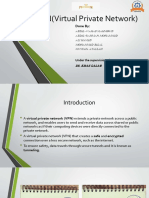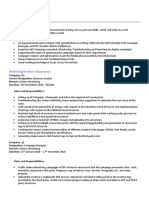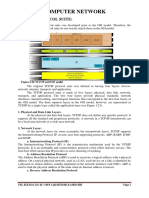0% found this document useful (0 votes)
27 views12 pagesCNT - Module 4
A Virtual Private Network (VPN) creates a secure and encrypted connection over the internet, allowing users to extend a private network. Setting up a VPN involves selecting a provider, downloading the client, and configuring the connection. VPNs offer benefits such as enhanced privacy, secure file sharing, and the ability to bypass geo-restrictions for streaming services.
Uploaded by
Yashashwini Reddy m sCopyright
© © All Rights Reserved
We take content rights seriously. If you suspect this is your content, claim it here.
Available Formats
Download as PDF, TXT or read online on Scribd
0% found this document useful (0 votes)
27 views12 pagesCNT - Module 4
A Virtual Private Network (VPN) creates a secure and encrypted connection over the internet, allowing users to extend a private network. Setting up a VPN involves selecting a provider, downloading the client, and configuring the connection. VPNs offer benefits such as enhanced privacy, secure file sharing, and the ability to bypass geo-restrictions for streaming services.
Uploaded by
Yashashwini Reddy m sCopyright
© © All Rights Reserved
We take content rights seriously. If you suspect this is your content, claim it here.
Available Formats
Download as PDF, TXT or read online on Scribd
/ 12

























































































